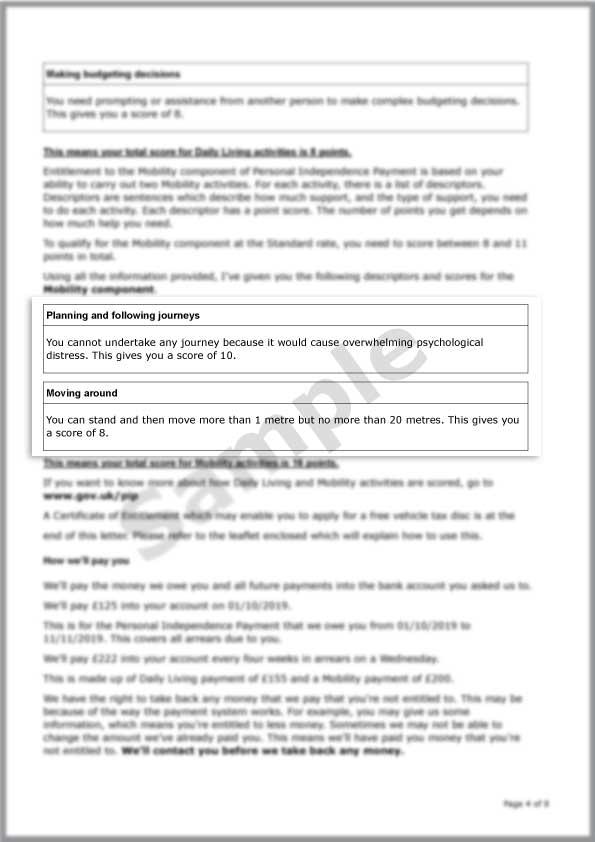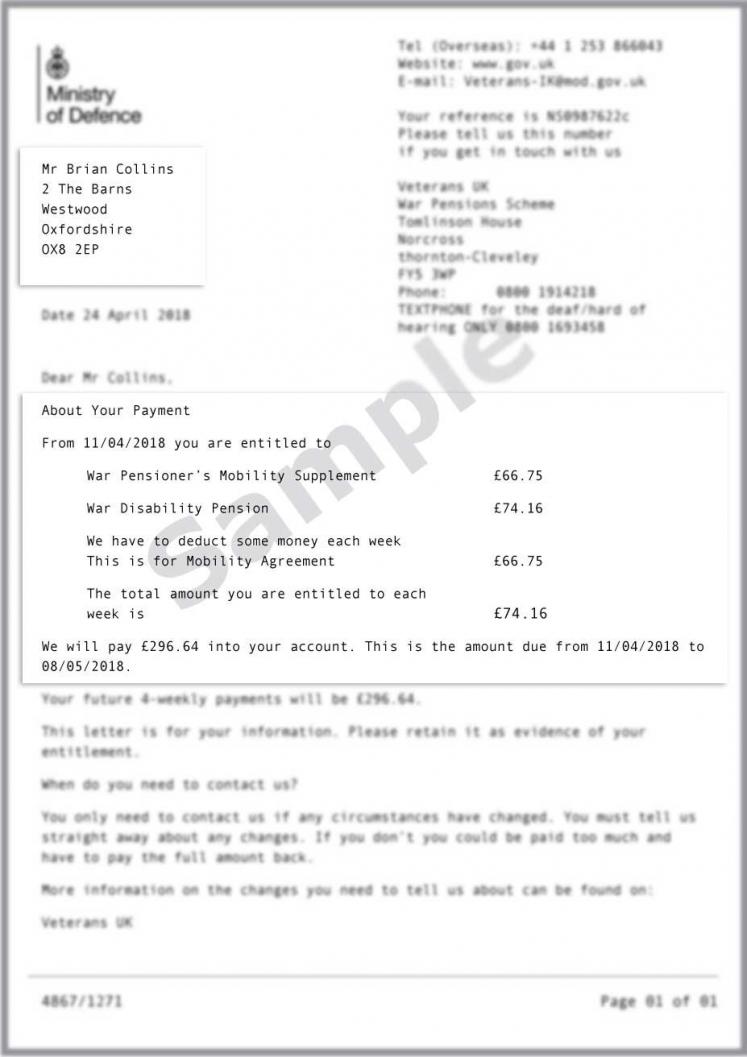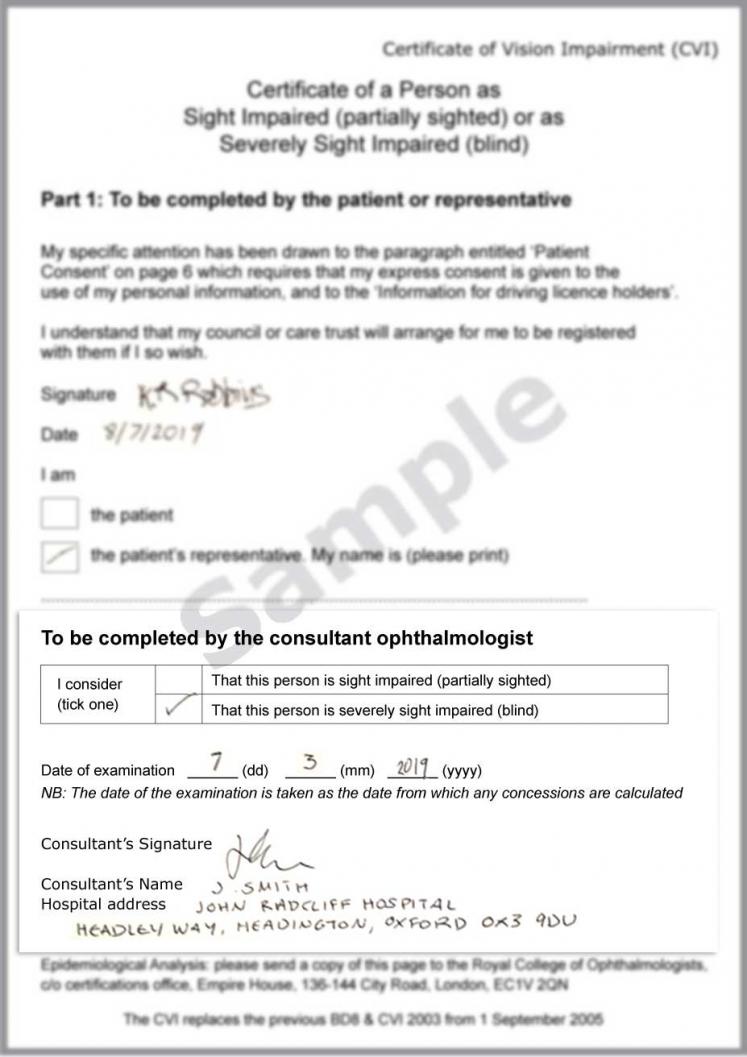Supporting evidence you need to provide with a Blue Badge application
This page describes the documents you'll need to provide for each criterion.
On this page
Terminal illness
If you have been given a medical prognosis of less than a year to live or have a DS1500, please speak to your MacMillan nurse, hospice worker, specialist nurse, GP or health professional who will complete a form on your behalf. You do not have to complete an application.
Disability Living Allowance mobility component
Checking with the Department for Work and Pensions (DWP)
We can check your entitlement with the DWP. If you permit us to check your benefit, you do not need to upload your letter from the DWP.
Upload your letter
You do not have to permit us to check with the DWP, but we do need to see proof of your benefit. So, you must provide a photo or scanned image of your most recent Disability Living Allowance uprating letter. The DWP typically sends letters in March confirming your payments from April. Otherwise, you can provide a 'letter of entitlement' dated within the last year.
We need to see your uprating letter, even if the DWP has awarded you DLA for life.
If you upload your letter, it must clearly show:
- your name and address
- the date of the letter
- that you receive the highest rate for the mobility component
- the expiry date of the award.
We will only issue the Blue Badge up to the award's end date.
Example of a DLA letter
The image below shows the page we need to see.

Personal Independence Payment
Checking with the Department for Work and Pensions (DWP)
We can check your entitlement with the DWP. If you permit us to check your benefit, you do not need to upload your letter from the DWP.
Upload your letter
You do not have to permit us to check with the DWP, but we do need to see proof of your benefit. So, you must provide a photo or scanned image of your most recent letter from the DWP. The DWP typically sends letters in March confirming your payments from April.
We need to see your letter, even if you have been awarded PIP for life.
When you upload your letter, it must clearly show:
- your name and address
- the date of the letter
- that you receive 'Mobility - Moving around - 8 points (or more)' or 'Mobility - Planning and following journeys - You cannot undertake any journey because it would cause overwhelming psychological distress - 10 points (only)'
- the breakdown of points
- the expiry date of the award.
We will only issue the Blue Badge up to the award's end date.
Example of the first page of a PIP decision letter
The image below shows the page we need to see.

Example of a PIP decision letter breakdown of points
We need to see this page.

Lump sum at tariff 1-8 from the Armed Forces Compensation Scheme
We need to see your award letter from Veterans UK. The letter should confirm that you:
- have been awarded a lump sum benefit at tariffs 1-8 of the Armed Forces and Reserve Forces (Compensation) Scheme
- have a certification of having a permanent and substantial difficulty which causes inability to walk or very considerable difficulty in walking.
War pensioners' mobility supplement
We need to see your letter from Veterans UK. You should receive your letter in March confirming your payments from April. We will need to see the award letter if you have only recently been awarded the supplement.
Example of a war pensioners' supplement decision letter
The image below shows the page we need to see.

Registered blind or severely sight impaired
If you are registered as blind / severely sight impaired with Oxfordshire County Council, we can check if you permit us. Otherwise, you will need to provide your Certificate of Visual Impairment (CVI.)
Example CVI confirming 'severely sight impaired'
The image below shows the document we need to see.

Can’t walk or find walking difficult
You must provide two pieces of medical evidence to support your application. The documents must:
- be relevant to your application criterion
- show how your condition affects your mobility
- show your name and address.
For example:
- a letter of diagnosis
- as up-to-date as possible evidence of the progression of the condition over time confirmation of ongoing treatments/clinic attendances, or referral for such
- evidence of specialist consultations, or referral for such
- evidence of prescribed medication relevant to your condition
- your patient summary or summary care records
- care plans from social care teams
- social housing letters/assessment reports from a local authority
- letters from other professionals involved in your care.
Your GP is unable to provide you with a letter to support your application, please do not contact your GP for a letter.
Non-visible (hidden) disability
Expert assessment form
We recommend that you ask your health or social care professional to complete an expert assessment form (opens new window) as evidence of your disability. Find out more about the expert assessors for Blue Badge applications (opens new window).
The expert assessment form should be completed before you start your Blue Badge application so that it can be uploaded to your application form.
Education Health and Care Plans (EHCP)
An EHCP can be used as evidence of a child's disability or condition.
Other accepted supporting evidence
If you are unable to provide an expert assessment form or an EHCP, you will need to provide two pieces of evidence. They must:
- be relevant to your application criterion
- show how your condition affects your ability to make journeys
- show your name and address.
For example, you should supply a selection of the following documents.
- A letter of diagnosis that shows your name and address
- As up-to-date as possible evidence of the progression of the condition over time confirmation of ongoing treatments/clinic attendances, or referral for such
- Evidence of prescribed medication relevant to your condition that shows your name and address
- Evidence of specialist consultations, or referral for such
- Your patient summary or summary care records
- Care plans from social care teams
- Social housing letters/assessment reports from a local authority
- Letters from other professionals involved in your care that shows your name and address.
Driver with disability in both arms
You need to provide your valid driving licence (this can also be used as your proof of identity and proof of address).
You may need to provide the following documents.
- A medical summary from your doctor or specialist that shows your name and address and confirms your conditions.
- A repeat prescription that shows your name and address and confirms the medication you are taking.
Child under 3 who needs to be kept near to a vehicle
You need to provide a letter from a medical professional involved in your child's treatment which confirms their medical conditions and any equipment required for their care.
The letter that you provide must show the child's address.
Child under 3 who needs bulky medical equipment
You need to provide a letter from a medical professional involved in your child's treatment which confirms their medical conditions and any equipment required for their care.
The letter that you provide must show the child's address.